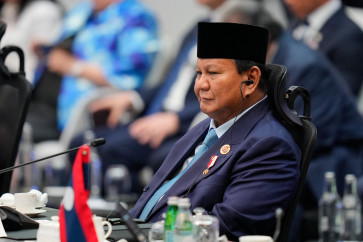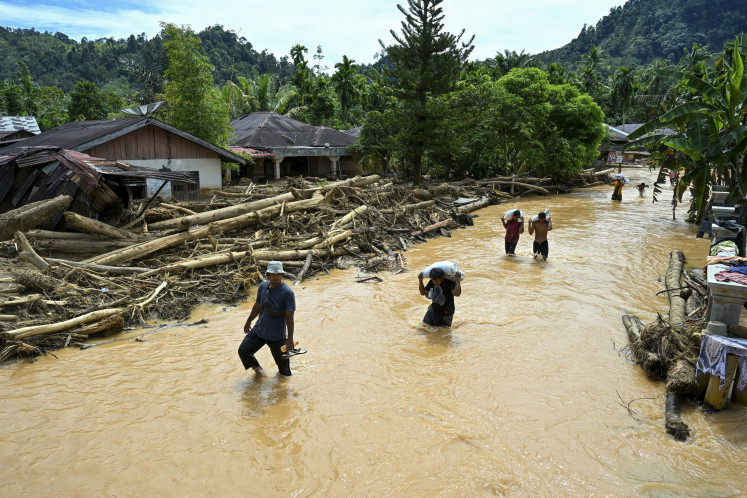Popular Reads
Top Results
Can't find what you're looking for?
View all search resultsPopular Reads
Top Results
Can't find what you're looking for?
View all search resultsPT Garam to build Kupang Bay salt farm in 2012
State salt producer PT Garam will begin building a 4,000-hectare salt plantation in Kupang Bay, East Nusa Tenggara, in 2012
Change text size
Gift Premium Articles
to Anyone
S
tate salt producer PT Garam will begin building a 4,000-hectare salt plantation in Kupang Bay, East Nusa Tenggara, in 2012. The firm expects production, which would begin in 2013, to increase national salt production by 500,000 tons.
PT Garam president director Slamet Untung Irredenta said the initial investment would be around Rp 500 billion (US$58.5 million).
“The investment will be disbursed by the Industry Ministry and would be utilized for land management purposes,” Slamet told The Jakarta Post by phone on Sunday, adding that the investment would not include costs for infrastructure.
“Costs for construction of a seaport, power plant and road access to the plantation can be determined after we finish the detailed engineering design for the plantation, hopefully by the end of the year,” he said, adding that the company also planned to establish another salt plantation in nearby Ende for future development.
According to Slamet, PT Garam would capitalize on synergies with traditional salt farmers already working in the Kupang Bay area and would not drive them out in the process of establishing its plantation.
“Rest assured, nobody will be evicted in the process,” he said.
Slamet added that he hoped national salt production would return to normal this year after the prolonged rainy season last year caused by the La Niña weather phenomenon resulted in salt production plummeting by around 97 percent to some 30,600 tons. There are currently 90,000 hectares of salt farms producing some 900,000 tons yearly.
“We will hopefully have continuous sunshine every day from August to October or November, so our salt production can return to normal,” Slamet said.
National salt production centers include Madura, East Java; Jeneponto, South Sulawesi; Bima, West Nusa Tenggara; and many cities on the northern coast of Java, including Indramayu and Cirebon in
West Java, Rembang and Pati in Central Java and Tuban and Gresik in East Java.
Slamet said national production was still below national demand of 2.6 million tons, with annual consumption growth between 5 to 10 percent per year.
“Household demand is about 1 million tons, the chlor-alkali plant industry is about 1.4 million and food and beverages account for about 200,000 tons,” Slamet said.
He said Indonesia had to import some 1.7 million tons of salt every year to meet domestic demand.
Industry Ministry director of upstream chemical industries Tony Tanduk said that land, infrastructure and limited fund allocation were the major issues in development of local salt plantations.
“There are many potential sites for salt plantations in eastern Indonesia. However, as they are far from Java, where most of the demand comes from, they are difficult to develop,” Tony told the Post. (mim)










